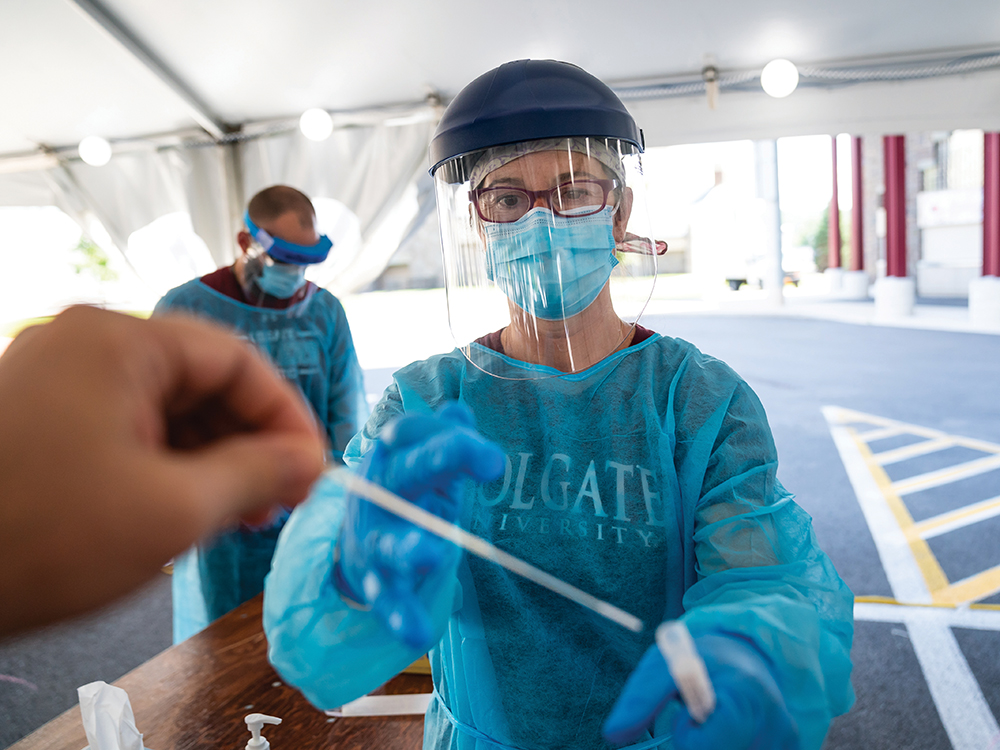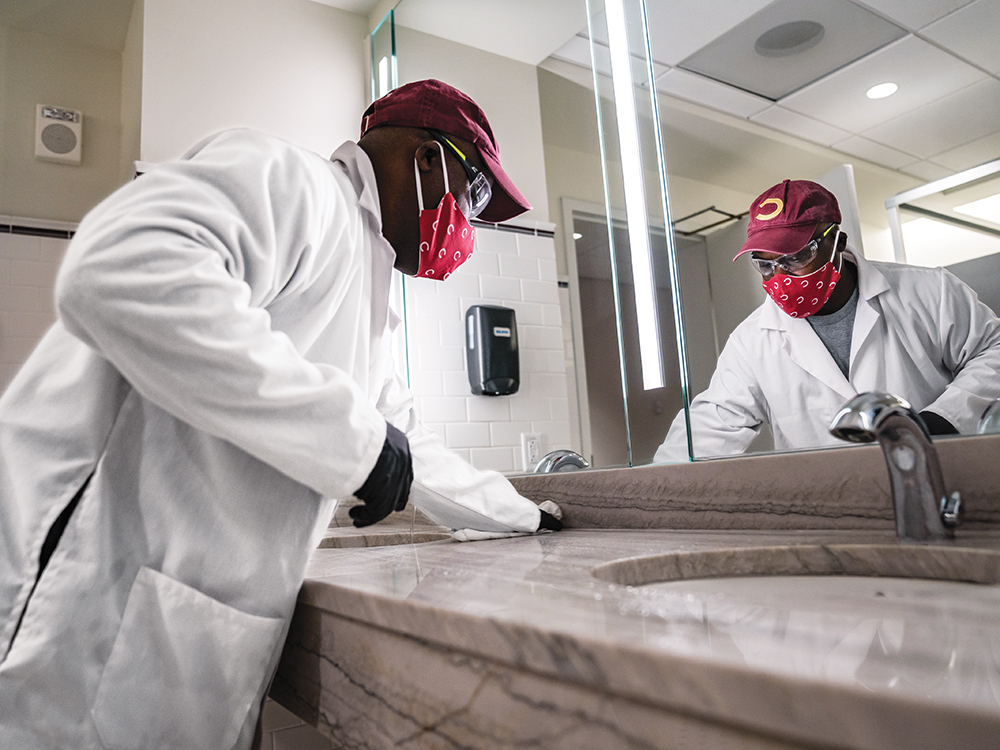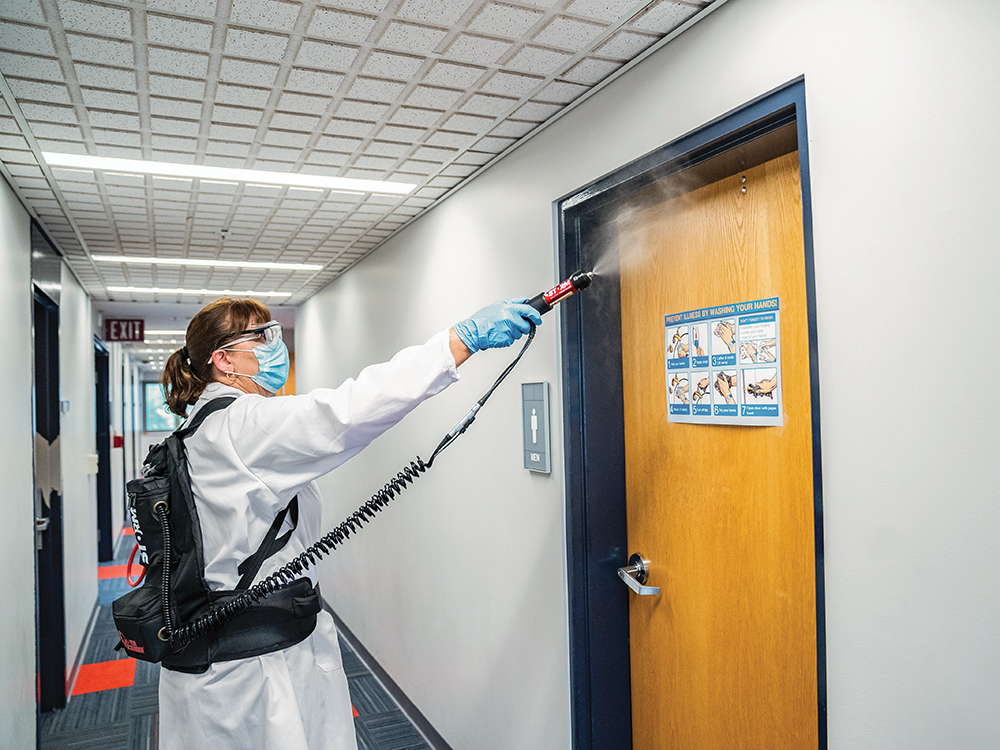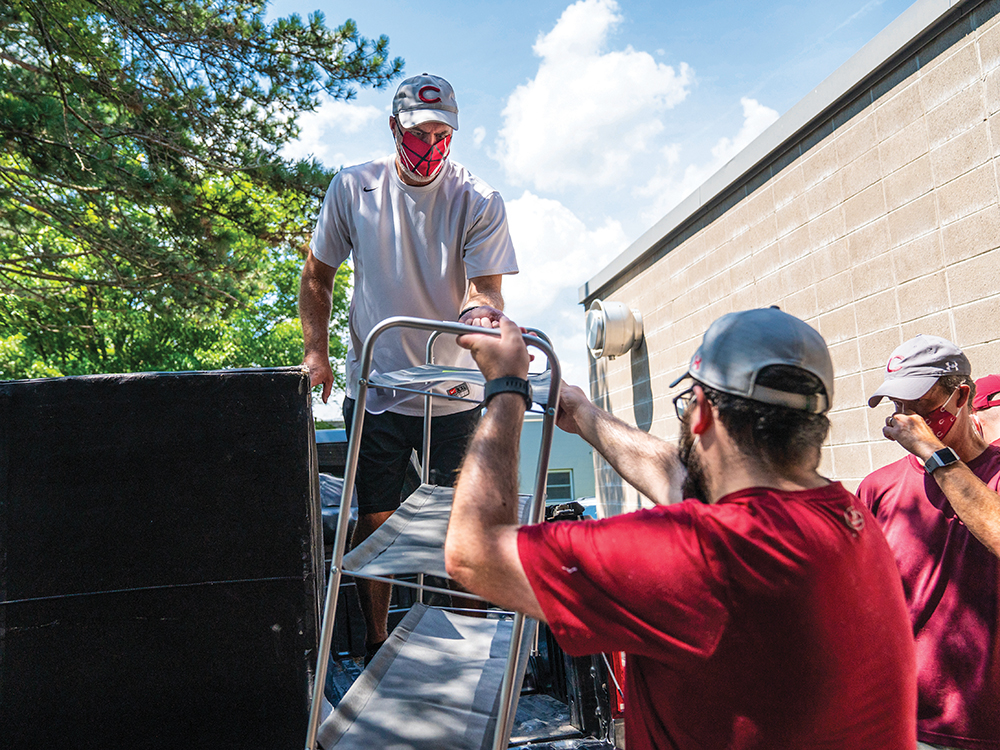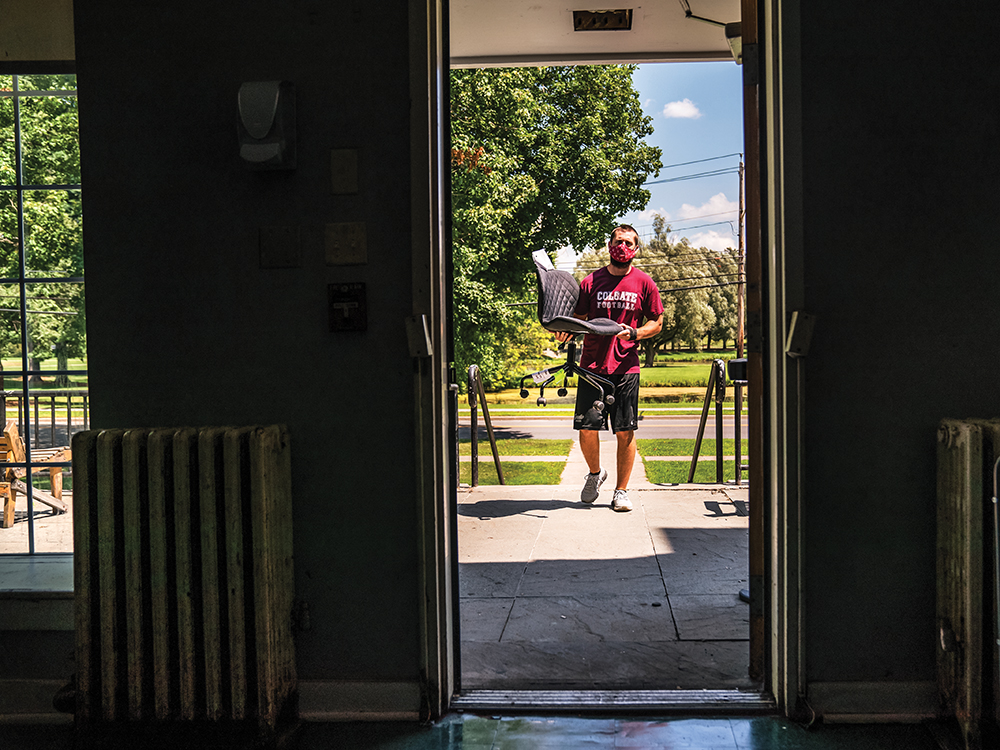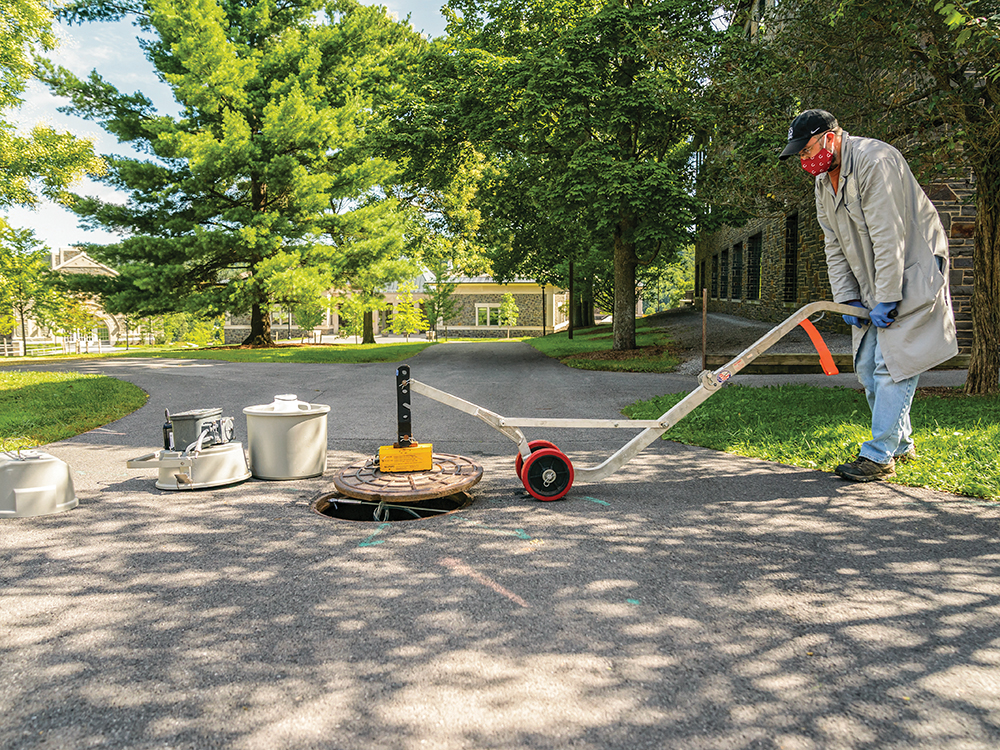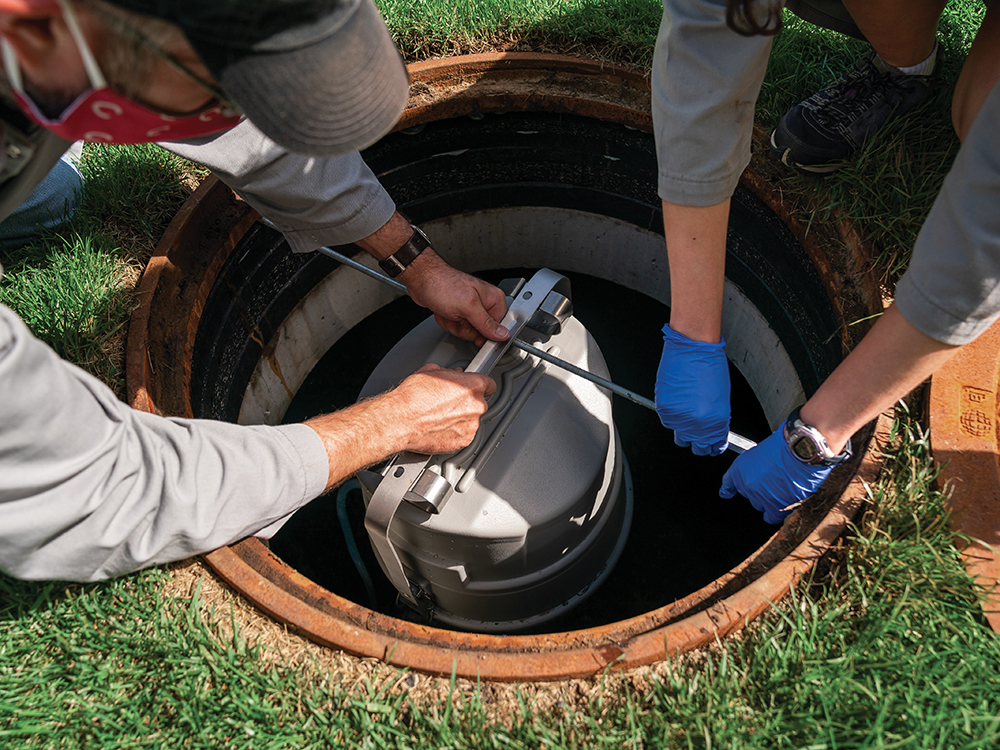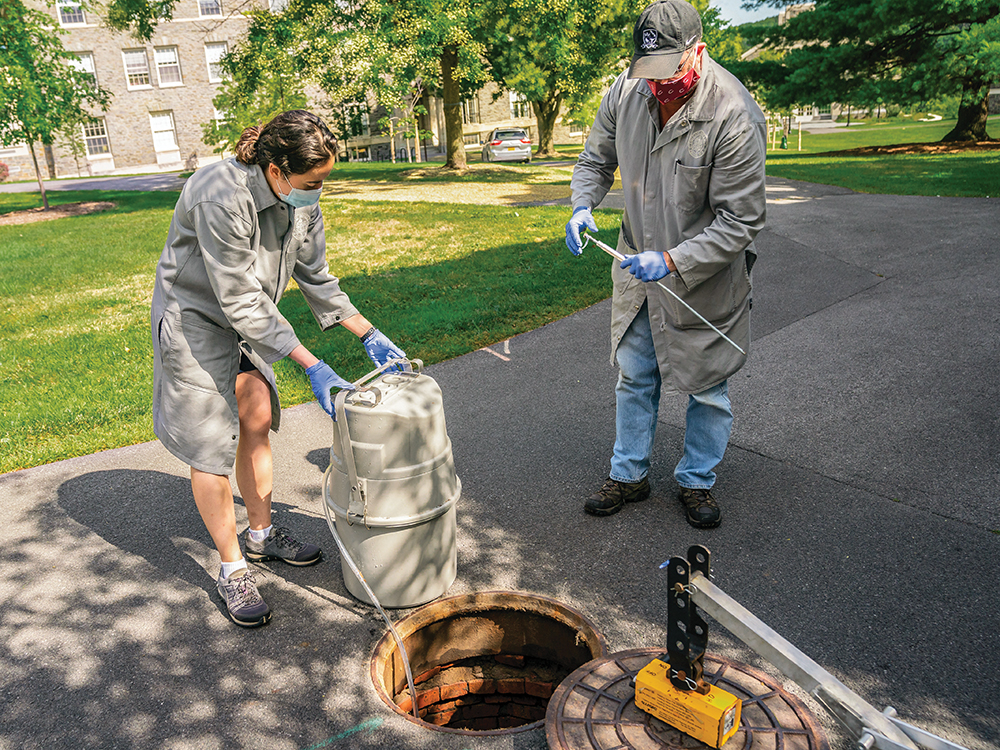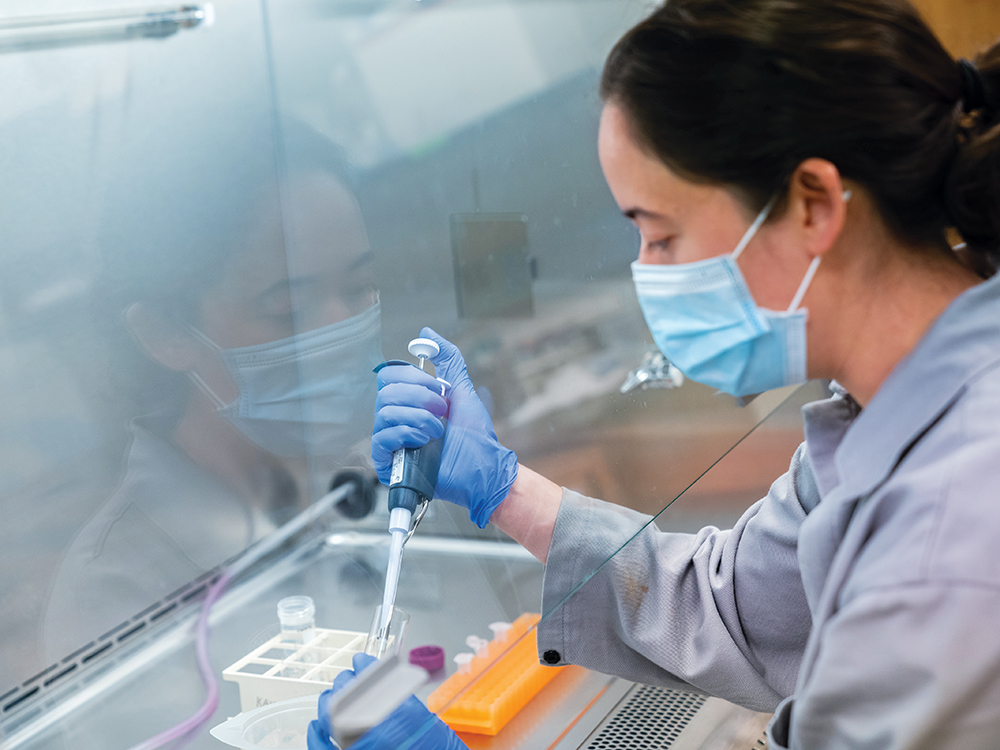Working Toward Keeping the University Community Safe
An ounce of prevention is worth a pound of cure,” Benjamin Franklin famously said.
It’s difficult to quantify all of the efforts Colgate has made — and continues to make — to protect the more than 2,500 students who have returned to campus. But photographer Mark DiOrio, who has been documenting the universitywide efforts, provides a behind-the-scenes glimpse into Colgate’s commitment in action. The following photos were taken throughout the summer as the University prepared for students to arrive in August.
“Everywhere I went, people were stepping out of their traditional roles and taking on new responsibilities to not only keep the community safe, but also to adjust to this new reality and prepare for Colgate life to go on,” says DiOrio.
“All were working toward something that was not about them, but about all of us,” he adds. “It is who we are.”
As of mid-September, more than 7,100 COVID-19 tests were administered on campus; 1,529 tests were the most done in one day (Aug. 31). Staff hours dedicated to testing through the end of the quarantine period totaled 1,554.
Left: Custodian Rodney Pearson disinfecting a bathroom in Benton Hall. Right: Custodian Eileen Buell uses a Storm backpack sprayer in Curtis Hall.
Athletics department staff members help move student belongings that have been stored in Starr Rink since the University closed last March.
Left: Head Football Coach Dan Hunt loads his pickup truck with items to bring to student housing. Right: Assistant Football Coach Jordan Belfiori carries furniture into the Phi Kappa Tau house on Broad Street.
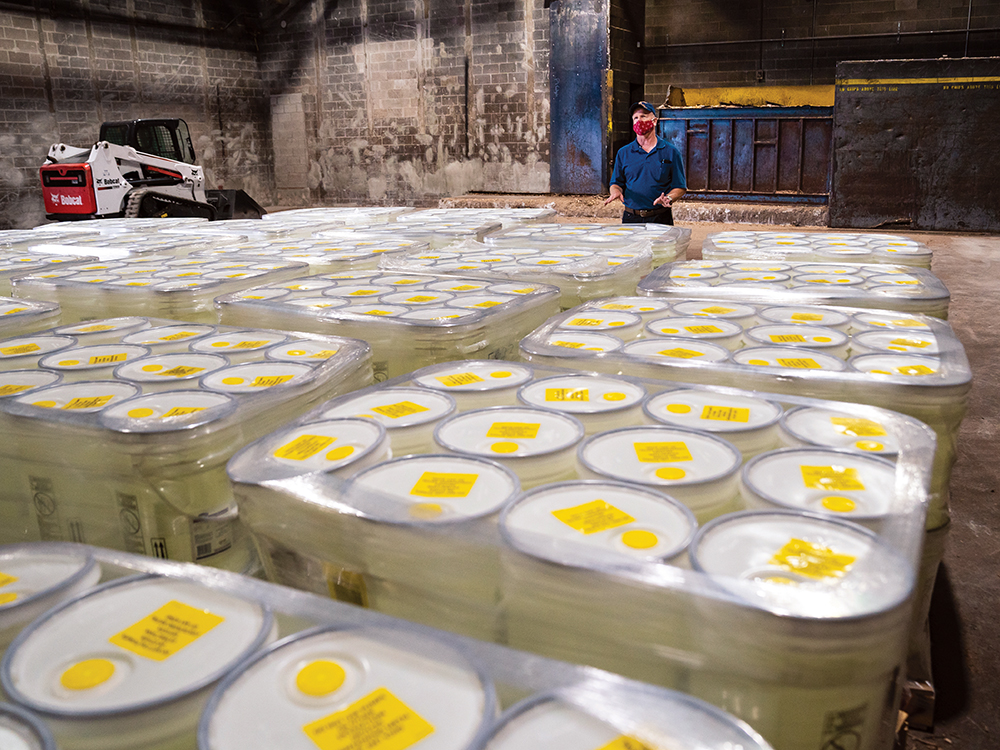
Geoffrey Holm, associate professor of biology, and Michelle Landstrom, a newly hired surveillance and monitoring technician, collect wastewater samples to test for detection of COVID-19. Because RNA from SARS-CoV2 appears in wastewater prior to outward signs of infection in an individual, this method of testing can help discover potential outbreaks before they would normally be detected, and the early notice can give the University critical time to conduct testing on locations that become a concern. Studies have indicated that viral RNA shows up about a week before symptoms occur. Seven locations across campus are designated as collection sites where biology lab technicians and Landstrom collect samples every 24 hours. The sampling system takes small amounts of wastewater every 15 minutes from the source pipes, and that collected sample is then analyzed.

